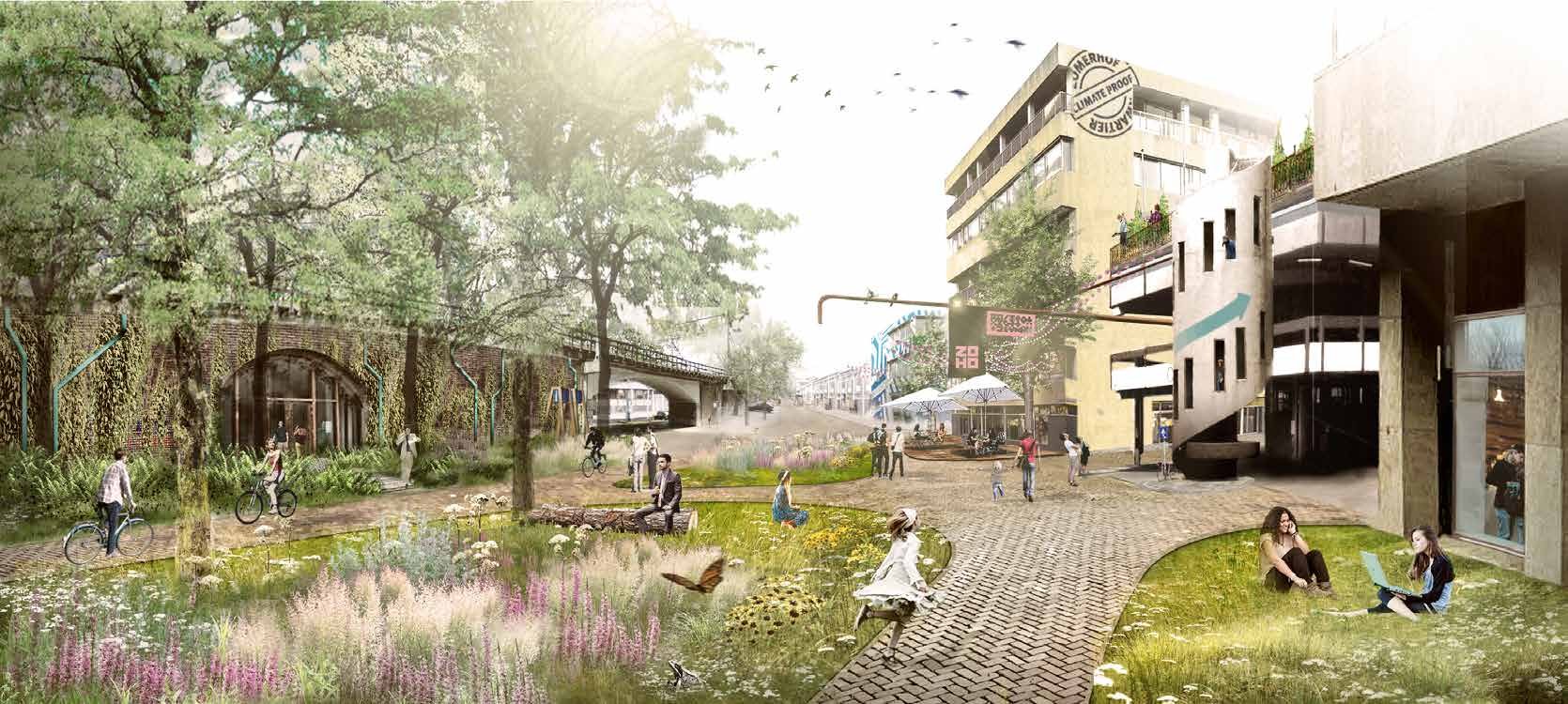
Climate proof Zomerhofkwartier
Rotterdam
Location | Rotterdam, The Netherlands
Year | 2014 - 2017
Client | Rotterdam North District and Rotterdam Climate Proof
Collaboration | Urban transition: STIPO | Polder roof: Basement bv, Dakdokters, Valorisation program Deltatechnology and Water | Katshoek Rain(a)way Garden: Fien Dekker, Binder groenprojecten, Thijsen – den Brok beton, Rotterdam Engineering Bureau | ZoHo Rainbarrel: Rien Hilhorst, Studio Bas Sala | Greening Hofbogen: Post-Office, 7 seasons, Hofbogen BV. | ZoHo Raingarden: Van Dijk Maasland, GreenSand, Municipal Nursery of Rotterdam, NAS (Nico Adriaanse Stichting)
Status | Feasability study / district climate coordination / hands-on realization / fund raising
Booklet
Climate Proof ZoHo is about the implementation of the Rotterdam Climate Adaptation Strategy on the district scale. For the years to come, De Urbanisten pinpointed ZoHo as the ‘field lab’ where promising climate measures are combined with the urban transition and local initiatives. Climateproof ZoHo aims to make the Zomerhofkwartier a more resilient and vital district at the same time.
The Zomerhofkwartier (ZoHo) is among the areas in deltacity Rotterdam that are vulnerable for the effects of heavy rainfall, longer periods of drought and heat stress. With our Benthemplein Watersquare, a first step is taken in climate proofing ZoHo. Next step is to enlarge the climateproof area. After years of decline, local entrepreneurs, creative professionals and neighbourhood associations have settled in ZoHo to experiment with re-programming the area and new ways of development.
Climate Proof ZoHo combines this urban transformation with innovative resiliency measures based on the Rotterdam Adaptation Strategy. The process included a deep analysis of the district climate conditions and a series of workshops where ZoHo citizens and professionals were working together to define specific strategies and a shared perspective.
In this perspective, an abundance of hard surfaces makes place for a structure of more soft and green public spaces that can hold water by infiltration and local storage.This adds to a more attractive network of streets and public spaces.
Following this perspective, several pilot projects are located in the district. Some of them can already be enjoyed, others will be realized soon, most often linked to the planned sewage renewal. Climate proofing ZoHo is a process and a work in progress:
Benthemplein watersquare already has become an iconic place, that combines temporary water storage with the improvement of the quality of urban public space (see project information).
Polder roof project proposes the transformation of the roof of the ‘Katshoek’ parking garage into an attractive green roof that stores and reuses rainwater from the nearby buildings in a controlled way for urban agriculture. It will also become a place for everyday recreation and outdoor events
Katshoek Rain(a)way Garden is part of the new Heer Bokelweg streetprofile in which an abundance of hard surface is being decreased. In the context of a colourful linear garden, innovative Rain(a)way tiles by Fien Dekker are be integrated and tested. https://rainaway.nl/
ZoHo Rainbarel is a participative water storage system. It is designed by Studio Bas Sala to be an icon for ZOHO and a smart solution for rain water reuse and storage at the same time.
ZoHo Raingarden urns an abundance of hard surface and underused parking spaces at the entry of the ZoHo district into an attractive welcome garden that collects rainwater from nearby buildings and public spaces. The project started with a guerrilla raingarden by De Urbanisten and the local community, The municipality embraced this initiative and realized the bigger ZoHo raingarden.
Greening Hofbogen aims at climate proofing and greening the monumental structure of the ‘Hofpleinlijn’. Analyses show, that there is a potential for a substantial greening of the facades and sidewalks. Illustrative in this is the Post-Office project. And most impressive; the 2 kilometre long roof of the abandoned railway can become a climate adaptive and nature inclusive roofpark.















